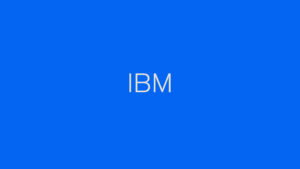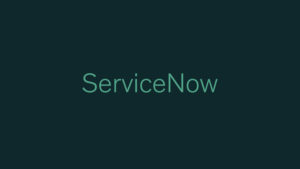
Designing for the Emerging Era
Every business is pulled between the magnetism of constant reinvention and the gravity of the past. As markets change, it’s natural for businesses to change in parallel. And yet, the stories of some of the most enduringly successful American businesses — think Coca Cola, Ford, and Disney — are testament to the value of staying true to the competency, service, or offering that made them great in the first place, even if the venue for their offering changes. There are rare occasions, however, when the evolving demands exerted by changing global circumstances perfectly align with the ready supply of certain existing businesses. Today, as countless companies around the world scramble — with varying degrees of grace and efficacy — to reposition themselves for survival within the emerging contours of a post-coronavirus landscape, a rare crop of businesses is capitalizing on the business models they’ve long cultivated, and finding extraordinary success in doing so. In short, they haven’t changed. The world has.
Just under 25% of corporate workflows were taking place on the cloud at the end of 2019. By the end of 2022, it’s expected that just under 50% of corporate workflows will be cloud-based.
Athletics has ongoing partnerships in strategy, design, and technology with three notable examples of this phenomenon: IBM, Citrix, and ServiceNow. To call it a phenomenon is perhaps misleading. A phenomenon denotes something spontaneous, something at odds with logic or reason. The accentuated relevance of these three companies, however, is not the result of passive good fortune, but rather of active and concerted efforts taken over decades, and in the case of IBM, more than a century. In this piece, we hear from the Athletics team members instrumental in crafting the strategies, design systems, and technology platforms through which IBM, Citrix, and ServiceNow communicate their value and forward-thinking perspective to the world. In doing so, we hope to shed some light on the nature of collaboration in a remote work world, as well as potential pathways forward for all businesses facing the uncertain new era before us.

Redesigning an international business titan
Over the past decade, Athletics and the IBM Brand and Experience Design Group have worked together to fundamentally change the way Big Blue appears in the world. Over our long partnership, we have strategized, designed, and launched more than a dozen IBM sub-brands, including Watson, Security, Blockchain, Developer, Garages, Cloud, and Think. Our new approach to design at IBM culminated in a new, company-wide Design Language, which rolled out in 2019. Our partnership is active and ongoing.
Jason Gnewikow, Partner and Creative Director at Athletics and a leader of our IBM collaboration, writes: “Our relationship with IBM has always been to behave as one highly-integrated team rather than in a discrete client-vendor arrangement. In some sense that was good practice for our new model of working remotely, as we rely with greater intensity on the same tools we’ve always used to keep communication active, like video conferencing, Slack, and so on.”
The takeaway: partnerships built on trust are built to last.
Explore the full IBM case study here

Forging success in a remote work world
Citrix was founded in 1989 based on an idea well ahead of its time: employees should be able to work securely from any computer, anywhere. In 2019, Citrix enlisted Athletics to comprehensively reimagine its brand strategy and visual identity, from motion graphics to user interface to sound design. The entire new brand is based on ample use of negative space, a naturalistic color palette, sparse language, and fluid sonic branding. Slated to launch in the midst of the largest shift to remote work in modern history, the new Citrix brand is now perfectly-positioned to become the digital workspace of choice for legions of remote workers and corporations.
Malcolm Buick, Partner and Creative Director at Athletics, writes: “Athletics had been working to rebuild the Citrix brand identity from the ground up since well before the COVID-19 pandemic. Even then, we understood that the modern workforce didn’t have a fixed location. Rather, they worked from wherever, telecommuting or splitting time between remote work and office hours. When the pandemic hit and our studio transitioned to a work-from-home arrangement, we had the opportunity to experience remote work firsthand alongside the professed experts at this method of corporate organization: our friends and partners at Citrix. Despite the disruption, our collaboration with Citrix remained seamless. Admittedly, remote work never quite replaces the power of human interaction, but so far our partnership has risen to the challenge and not missed a beat. Conversation, communication, and collaboration with Citrix has reached a whole new level of trust and ambition, perhaps because now we’re all in the same boat, putting their thesis of technology to the test.”
The takeaway: companies that practice what they preach set themselves up for success.
Stay tuned for the launch of the new Citrix brand coming Fall 2020

Digitizing the workflows that make our world work
ServiceNow develops and distributes innovative workplace automation software, based on the belief that digitization will free us to work better in every sense. In 2018, ServiceNow enlisted Athletics to conceptualize, design, and develop Workflow Quarterly, the company’s new digital publication. We were challenged to develop a flexible, immersive system to present this original research in a compelling narrative format, then implement the system over four issues.
Allison Connell, Design Director at Athletics and a leader on the ServiceNow project, writes: “ServiceNow is poised to help other organizations work through changes to their ways of working and operating, particularly as they face new challenges during this crisis. Through the work we’ve been doing on Workflow Quarterly, we’ve been seeing the ways ServiceNow helps businesses and business leaders succeed, but it’s also great to see how they’ve been partnering with relief efforts like the State of Washington’s Department of Health on containment efforts.”
The takeaway: companies that use their core competencies to respond to crises — and help others do the same — earn goodwill that endures well after the dust settles.
Explore the full ServiceNow case study here
Normal never existed
Paul Worthington is a Boston-based strategist with whom Athletics has collaborated on projects ranging from The Masters to Major League Soccer. Having advised clients including Microsoft, HP, Citibank, and GE through financial crises and a wide range of other challenges, Paul brought unique insight to our recent partnership with Citrix, crafting a refreshing new strategic foundation for the company (see details above) that perfectly orients the brand to respond to the current mass shift toward remote work. To conclude our examination of why certain brands sink or swim in times of crisis, Paul shares some thoughts on strategic decision-making under pressure:
“The challenge with the term ‘new normal’ is twofold. First, when we think this way, we risk falsely normalizing the abnormal, which means that we risk making decisions with long-term consequences on the basis of limited data and without a clear understanding of which changes might become permanent. Strategically, we need to instead understand the interplay between three things:
What are the immediate and necessary tactical reactions to the crisis we have to undertake today that might not be critical in the long-term?
What are the emergent opportunities and threats that might impact our strategy, and how should we act on these? Strategy in a time of turmoil is, in general, going to be much more emergent than it is planned, which requires a renewed emphasis on observing what is happening in the market, and why.
What can we learn from past downturns and recessionary periods that we might apply now, even though we understand that the pandemic is going to be different? In many ways, it’s unlikely to be so different that we cannot learn anything from the past. Let’s not forget, for example, that the Roaring Twenties immediately followed the Spanish Flu pandemic of 1918.
Overall, this is decidedly not a time for cookie-cutter, applies-to-all advice. The COVID-19 pandemic is having an asymmetric economic effect, so every business needs to observe what is happening in its own industry and to its own business in order to decide on its own best path forward.
It’s less that completely new trends are emerging, but more that existing trends are being accelerated. It’s basically digital transformation multiplied by 1,000 for a lot of businesses.”
If you enjoyed Paul’s thoughts here, you’ll love his periodic newsletter — Off Kilter. Subscribe here for incisive commentary on tech, brand, and culture.